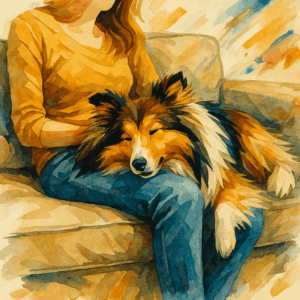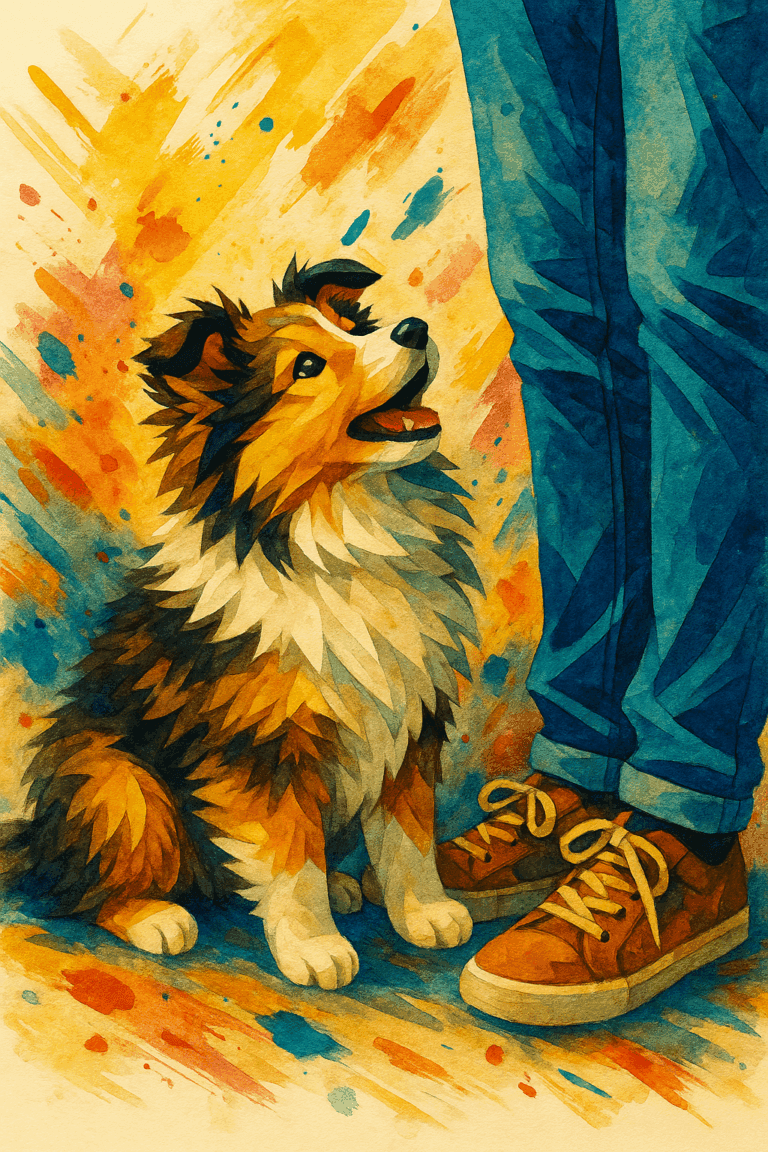
Should You Place Yourself on a Waitlist?
- May 6, 2025

Owning a sheltie is a lifelong commitment and not a spur of the moment decision.
The Era of Breeder-Hopping and the Impatient Puppy Search
Decades ago, finding a purebred puppy involved letters, phone calls, and, more often than not, waiting lists. Today, the search has been made into a process that is increasingly transactional, digital, and urgent. With a few taps, someone can contact ten breeders in one afternoon, often with the unspoken expectation: “If you can’t give me a puppy now, someone else will.”
Unfortunately, this shift is part of a broader societal trend: we’re living in an age of on-demand everything. We can stream a film in seconds, get groceries delivered to our doorstep within hours, and summon emotional content with the swipe of a finger. It’s no wonder, then, that the same impulse is now directed at acquiring pets.
But while society has evolved toward instant gratification, the world of ethical dog breeding has not and arguably, cannot keep up.
The Breeder’s Clock Ticks Differently
For a responsible breeder, a litter is not just the result of two dogs being bred together. It’s often a multi-year project of planning, health testing, pairing for structure and temperament, and ensuring every puppy has the best start in life. Breeders raise their litters hands-on, in-home, day and night, for 8 to 10 weeks, and then offer lifetime support. That kind of investment can’t (and shouldn’t) scale up to meet spontaneous demand.
When a buyer contacts five breeders and goes with the first who has a puppy available now, it undermines the entire foundation of selective, ethical breeding. Worse, it risks rewarding volume over vision putting convenience over character.
The Rise of Polished Volume Sellers
Backyard breeders and large-scale puppy mills have learned to adapt, and thrive, in this climate. They now operate with sleek websites, clever branding, and rapid communication. From the outside, they appear indistinguishable from responsible preservation breeders. But underneath the polish, their breeding programs often lack the generational health testing, structural evaluation, and long-term breed stewardship that defines ethical and responsible breeding.
Their ability to scale and deliver puppies on demand feeds directly into consumer expectations. But the product they deliver – rushed litters, limited socialization, and questionable genetic health goes against the very grain of traditional preservation breeding.
These operations don’t just compete with ethical breeders; they dilute the public’s understanding of what ethical breeding even looks like.
The Human Side: Grief, Need, and Urgency
In fairness, there’s another side to this demand and urgency. Often, people aren’t being flippant – they’re hurting. A dog may have just passed away. There’s a silent house. A routine has been shattered. People search for a new puppy not out of disregard for breeders’ values, but to fill the aching space left by their companion.
I understand this deeply. My first dog lived to 18 years, and after she passed, I waited seven more before bringing the next dog into my life. This is not always the case as everyone’s emotional thresholds are different. I waited that long not because I didn’t want another dog, but because I didn’t believe I could offer another the same life, the same depth of love, the same daily devotion. My grief wasn’t something I could patch with a quick fix. More importantly, I waited until I knew I could perceive a new companion’s uniqueness and personality to give them the dignity they deserve and earn.
This emotional urgency is real. We must name it with compassion. Breeders, such as myself, who’ve walked the path of loss themselves know this longing and many will tell you it’s okay to want, even to need, a dog again soon, but also understand why one would be needed with a degree of urgency. But what we must also remember is this: just because the need is immediate doesn’t mean the solution should be.

Owning a sheltie is a lifelong commitment and not a spur of the moment decision.
The Middle Ground: Educated, Intentional Matching
The answer is not to shame prospective buyers, nor to ask breeders to bend their standards. Instead, it’s about building a better bridge.
-
Buyers should feel safe to share their emotional context. When a breeder understands your heart, not just your request, they can guide you better.
-
Breeders should strive to communicate clear waitlist timelines and help redirect urgent inquiries to like-minded peers when needed.
-
The Sheltie (or any breed) community should normalize both grieving time and intentional waiting. Not every space needs to be filled immediately- and sometimes, the right dog is worth the wait.
Consequences of Speed Over Substance
Those who bypass intentional pairing risk more than just mismatched temperaments or training headaches. Puppies acquired in haste can come with health issues, poor early socialization, and minimal breeder support. What seems like a “faster” path to healing can end up leading to deeper frustration – or even heartbreak.
Breeder-hopping doesn’t just put pressure on breeders. It also feeds into an industry model that prizes availability over ethics. And when that model becomes the norm, the dogs, and the families who love them, suffer most.
Final Thoughts
The desire to welcome a dog quickly isn’t wrong. But like any meaningful relationship, the best ones are rooted in patience, preparation, and aligned values. We live in a world where people are increasingly disconnected from the source of what they consume—food, products, even pets. Ethical and responsible breeders offer something different: not just a puppy, but a dog brought into this world with purpose and history.
To those who are waiting: take heart. You’re not standing still – you’re standing with intention.
To breeders: extend grace. Educate without ego, and remember that behind every impatient email may be a broken heart.
To all of us: let’s evolve together, with empathy, clarity, and care.
Ask yourself: Am I looking for the next dog or the right dog?
There’s a reason my waitlist application is on the front page. If you’ve come here; then you’re in search of something of quality and value that is worth the wait.